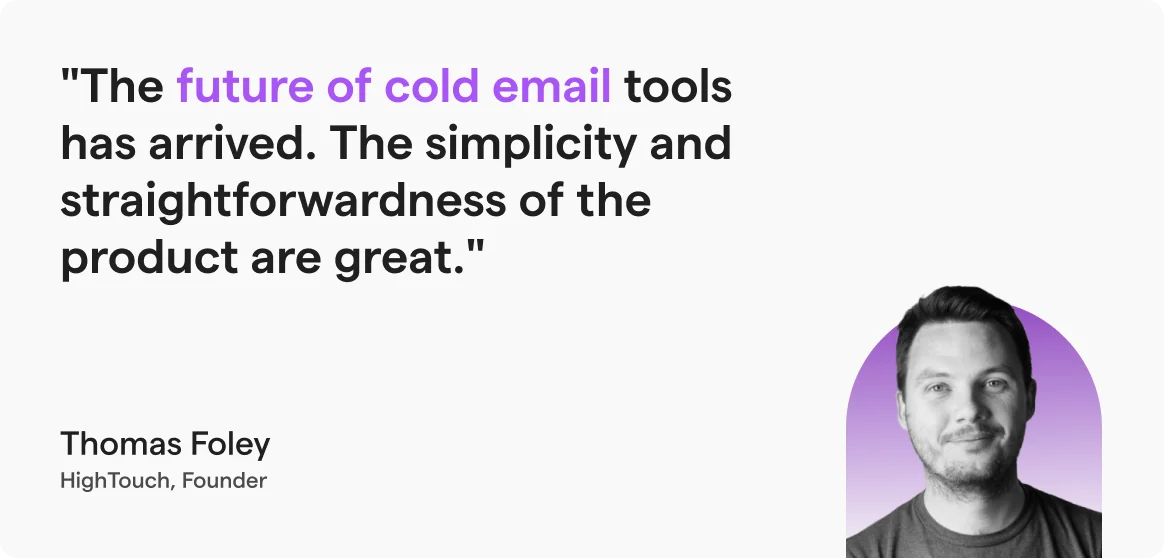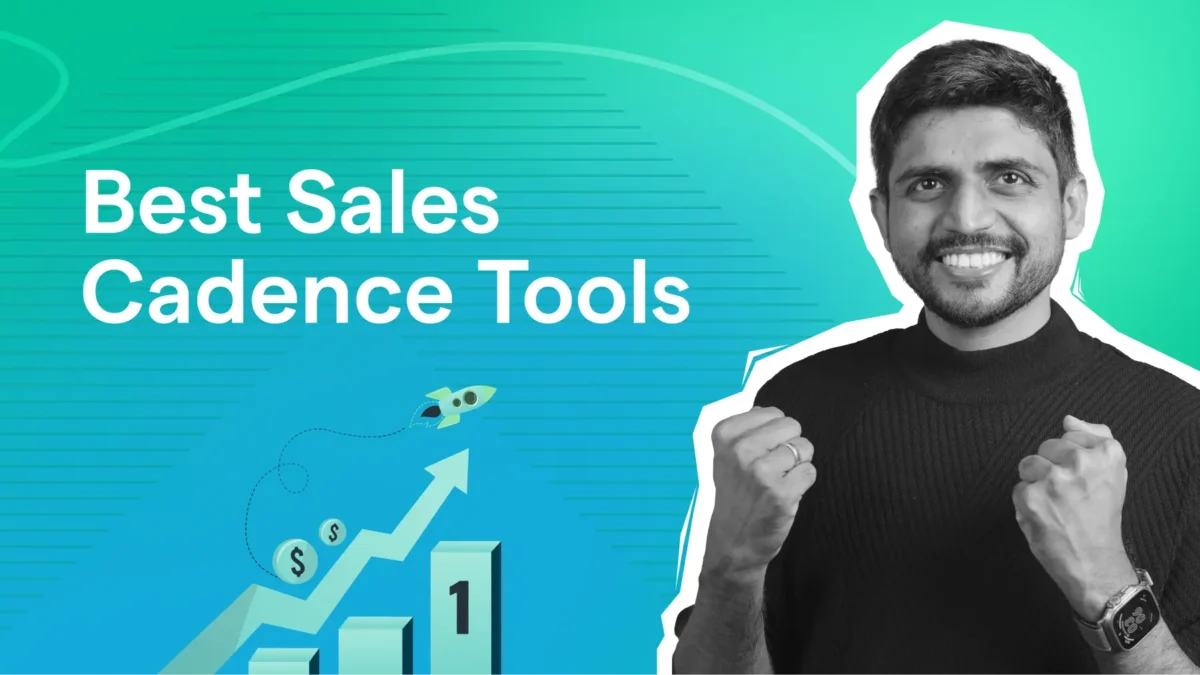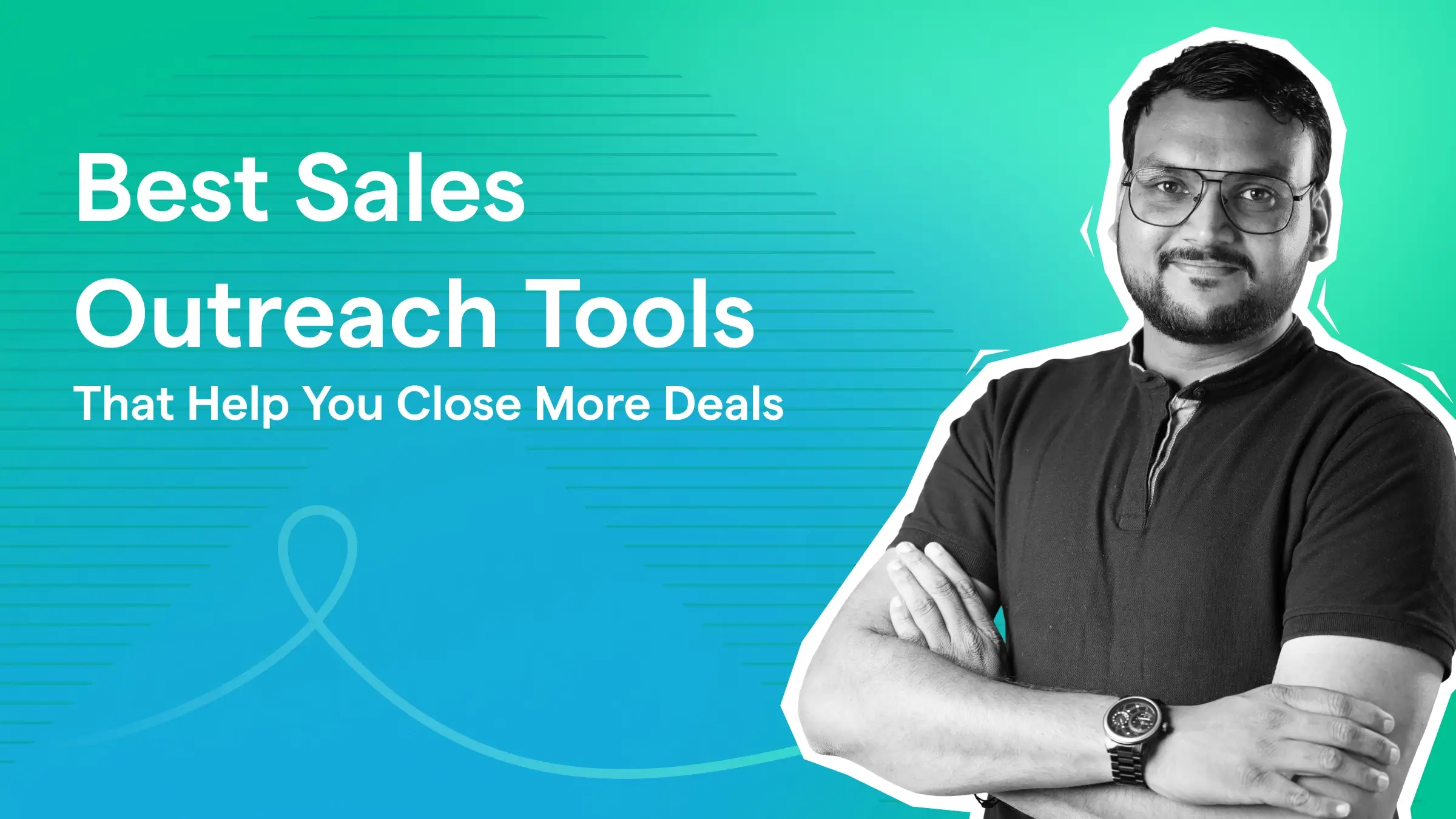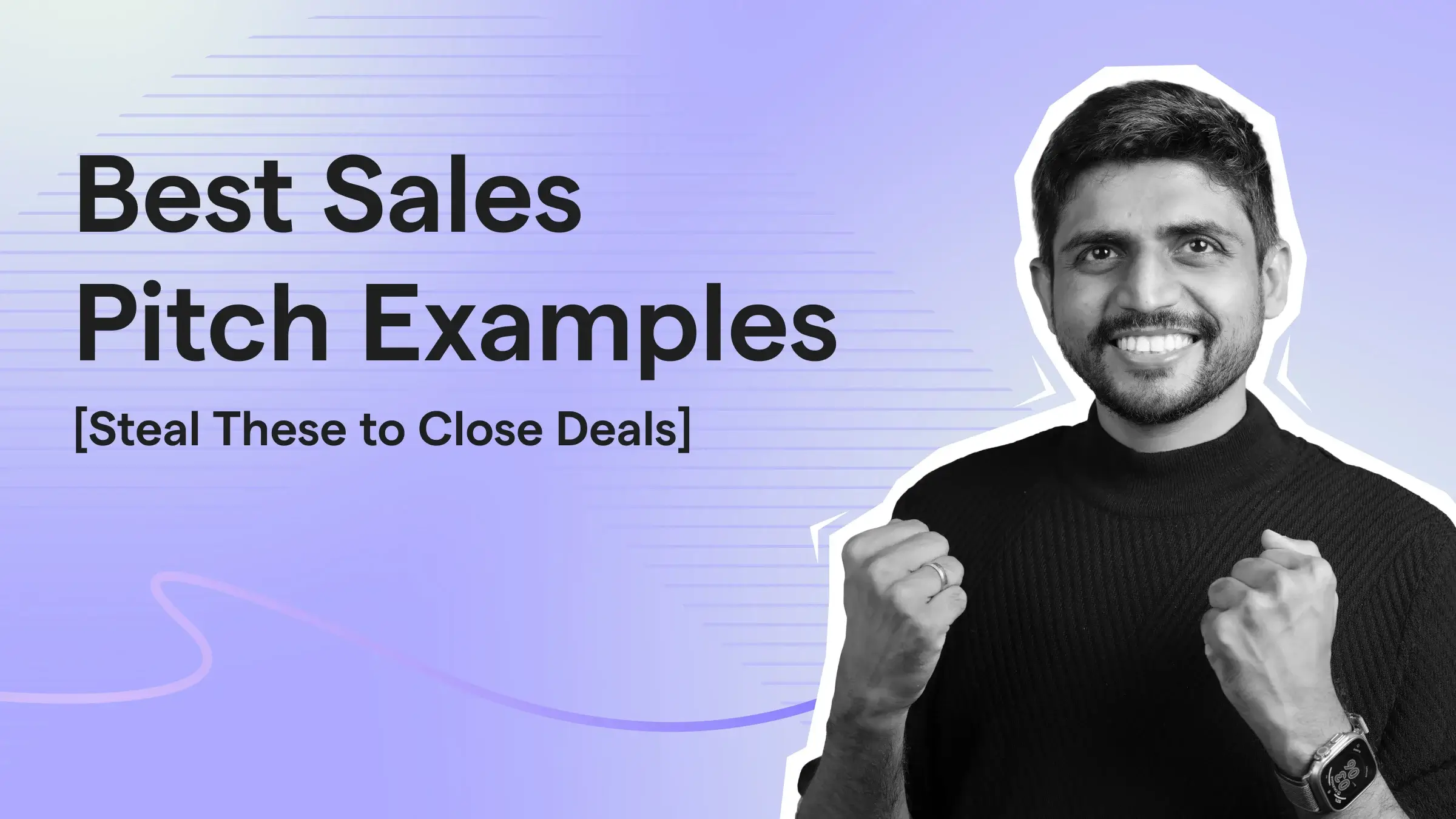Contents
As an entrepreneur, the sales department is where I interact the most. Why? Because they have the best insights about the product from the customers.
While finding my solutions from them, I found their struggles.
“How they spend hours crafting emails, chasing follow-ups, building the perfect funnel to move the leads smoothly, and trying to keep leads from slipping through the cracks.”
Too much effort, time, and mental strain eventually block them from hitting their goals!
It’s not that they’re doing anything wrong. The problem lies in their sales cadence tools or simply the lack thereof.
Too many sales teams are still stuck with inefficient process setups, and platforms just don’t deliver what they promise.
The issue was necessary; hence, to solve this, I went on a mission to find tools (Because it cannot be optimized with just one tool) that could simplify the sales cadence process.
I tested all the new ones and the classic OGs. Some were overpriced, others clunky, but eventually, I found a set of tools that worked.
P.S. I will also share what factors we kept in mind to find the perfect tools for us. Don’t miss out on them!
Sales Cadence Tools: Table of Content
(TL;DR) Top 6 Sales Cadence Tools for Different Use Cases
Short on time? I got you. Here are the best sales cadence tools summarized for you based on different use cases.
- Saleshandy – Best for AI-Powered Cold Email Automation
- Close – Best for Calling Cadences.
- Outreach – Best for Enterprises with Big Budgets.
- EngageBay – Best CRM for Small Teams.
- Pipedrive – Best for Sales Pipeline and Lead Management
- Hubspot CRM – Best CRM Tool for Big Sales and Marketing Teams.
Still, I recommend reading on! I’ve broken down what each tool does well (and where it falls short).
What Is Sales Cadence?
A sales cadence is a structured set of engagement activities that help sales teams reach out to leads at the right time, using the right channel.
Here’s what it usually includes:
- A clear plan for how and when to reach out
- Multiple touchpoints like emails, calls, LinkedIn messages, etc.
- Smart follow-ups scheduled at the right time
- And a system to track what’s working (and what’s not)
The order of these steps matters a lot.
Done right, a sales cadence helps you:
- Stay top of mind with prospects
- Close deals faster
- And avoid leads slipping through the cracks
In short: a good cadence = more replies, more structure, and less chaos for your reps.
If you are looking for a quick overview of the top 3 sales cadence tools, you can check our YouTube video.
Top 12 Sales Cadence Tools
Most leads require at least three touchpoints before they respond.
To do that effectively, you need tools that save your time, automate your work, and integrate seamlessly with your existing tool stack.
Here’s the list of 12 tools we personally use, along with what they do well and where they fall short.
Let’s get started.
- Saleshandy
- Outreach
- Salesforce
- Snov.io
- EngageBay
- Klenty
- Hubspot Sales Hub
- PipeDrive
- Salesloft
- Apollo.io
- Gong
- Close
1. Saleshandy
Best for:
Individual SDRs, SMBs, and agencies looking for an all-in-one cold emailing tool with AI and automation to save time and close deals faster on budget.
Saleshandy is an AI-first cold email platform loaded with everything you need to scale outreach. (Basically an advanced email cadence software)
The reason Saleshandy is #1 on my list is simple — it lets you set up automated email cadences in minutes..
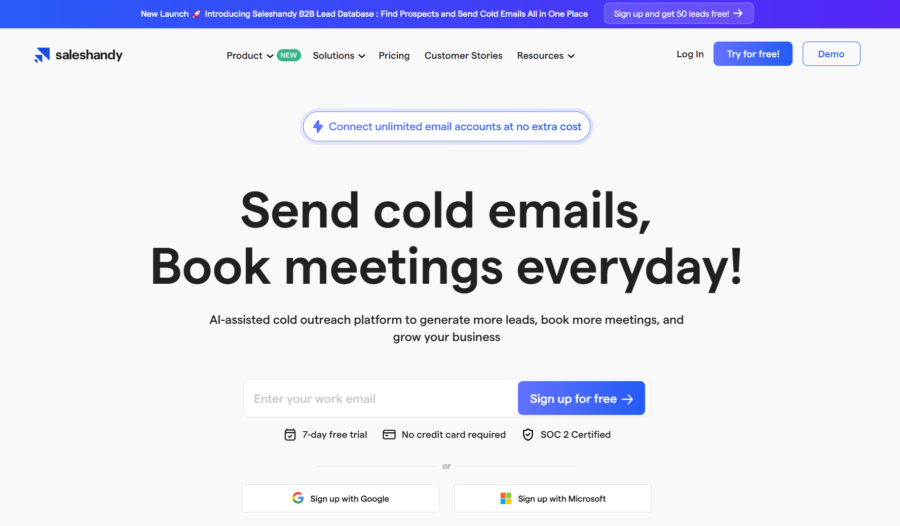
But there’s more!
How Sales Teams Benefit from Using Saleshandy
- Save time by completely automating personalized cold emails.
- Automate sending highly targeted follow-ups with smart triggers, such as “if opened” or “if link clicked,” and more.
- Speed up sequence creation using AI that builds personalized sequences by answering three simple questions about your business and goals.
- Easily add active LinkedIn prospects directly into your email sequences for quicker conversions. (Check LinkedIn Chrome Extension)
- Gain clear insights with detailed reports to track performance and improve team results.
What else?
You get email addresses and phone numbers of decision-makers from a massive B2B database of 700M+ professional profiles from 60M+ companies.
If your sales team keeps running out of leads, this lead finder is a lifesaver – it lets you select and export up to 10,000 leads in one go.
Pros
- Advanced email deliverability suite with AI bounce detection, blacklist checks, authentication status monitoring, and AI spam detection to ensure inbox placement.
- Efficient team collaboration with strong and secure admin controls and access management.
- Detailed tracking, analytics reports and a dashboard.
- Integrates easily with tools like HubSpot, Salesforce, and PipeDrive.
- Mobile app with real-time lead action notifications to ensure prompt responses.
Cons
- You only get 7 days free trial.
Price (Billed Annually)
- Outreach starter: $25/Month
- Outreach Pro: $69/Month
- Outreach Scale: $139/Month
- Outreach Scale Plus: $209/Month
For the latest price updates and offers, please visit this pricing page.
2. Outreach
Best for:
Enterprise-level organizations with big budgets who can use AI and automation features to reduce workload.
Outreach.io is an AI-powered sales execution and sales engagement platform.
I have kept it 2nd on the list due to its sales engagement and automation features. (It’s amazing!)
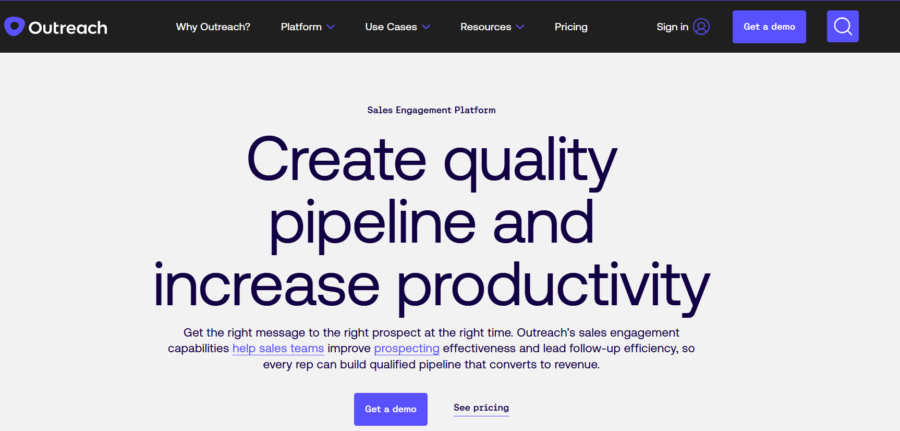
It is built with systems that help sales teams increase their revenue using their system intelligence features and AI agents.
Let’s check a few of them.
Here are My Favorite Sales Cadence Features From Outreach
- AI agents help reps by automating research, scheduling, and sharing insights on when and how to close deals.
- Built-in scheduler lets you book calls and meetings without leaving the platform.
- Detailed analytics reveal which sequences, messages, and workflows are most effective, enabling you to refine your sales cadence.
However, many of its advanced features come with a premium price tag.
So, teams with tighter budgets may not get access to everything.
Pros
- Its automation features save time and are highly customisable.
- Team-friendly features like sharing reports, templates, or notes for easy management.
- Integrates well with many tools like AWS Marketplace, HubSpot, Salesforce, and 6Sense.
Cons
- Pricing is not transparent.
- The platform is buggy.
Pricing (Billed Annually)
Custom pricing available upon request.
3. Salesforce
Best for:
Large enterprises that need a customisable CRM with sales, marketing, and service tools.
Salesforce is a powerful CRM and customer data platform for large businesses and growing teams.
I personally like how customizable the tool is.
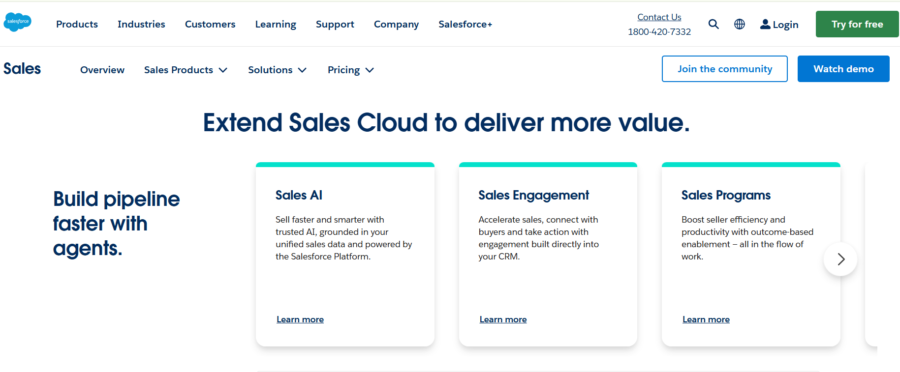
You can customise pipelines, automate tasks, and connect thousands of apps to fit exactly how your team works.
Here are My Favorite Sales Cadence Features From Salesforce
- Its automation tools streamline workflows by handling repetitive tasks, such as lead routing, email alerts, and task creation.
- It’s AI, called Einstein, provides smart insights, forecasts, and personalized recommendations to boost sales performance.
- Supports complex team structures and permissions to maintain data security while facilitating collaboration.
Pros
- Strong automation and AI capabilities.
- Huge app marketplace and third-party integrations.
- Scalable and suitable for complex sales processes.
Cons
- Expensive, especially for smaller teams.
- Some features require additional paid add-ons.
Pricing (Billed Annually)
Enterprise Plans
- Enterprise: $165/Month
- Unlimited: $330/Month
- Einstein 1 Sales: $500/Month
P.S. They have separate plans for SMBs with limited features.
4. Snov
Best for:
Sales teams and solopreneurs who want an all-in-one prospecting tool with outreach and LinkedIn automation.
Snov.io is a cold outreach and LinkedIn automation tool.
It combines cold outreach, email verification, and LinkedIn automation in a single platform.
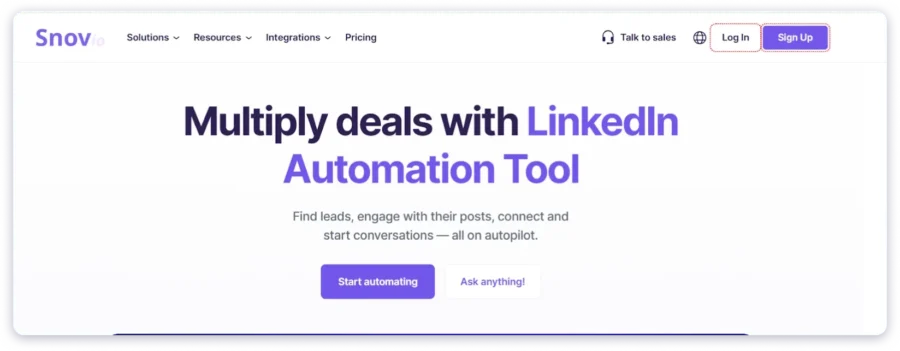
Making it perfect for teams that want to streamline their prospecting workflows without juggling between multiple tools.
Here are My Favorite Sales Cadence Features From Snov.io
- LinkedIn automation helps you auto-connect, visit profiles, and send messages as part of your cadence.
- Email Finder and Verifier enable you to find and verify B2B leads simultaneously, reducing bounce rates.
- Built-in CRM tracks prospects, pipelines, calendar events, and campaign engagement all in one view.
Pros
- Unlimited sender accounts and follow-ups, even on starter plans.
- Chrome extension is a quick way to enrich lead data from any webpage.
- Native integrations with Pipedrive and HubSpot, and more.
- Find leads and warm inboxes all in one tool. Helps save deliverability.
Cons
- Email finder gives pre-verified emails.
- Sometimes, follow-ups may appear as new emails.
- Pricing plans are not cost-effective.
Pricing (Billed Annually)
- Starter: $30/Month
- Pro: $75/Month
Looking for a Sonv.io alternative? Check this: Top 10 Snov.io alternatives.
5. EngageBay
Best for:
Small to medium businesses looking for a budget-friendly CRM.
EngageBay is an AI-powered CRM tool designed for sales professionals.
I’ve added it 5th to this list because the tool is simple, fast, and designed for sales teams who don’t want to waste time learning complex software.
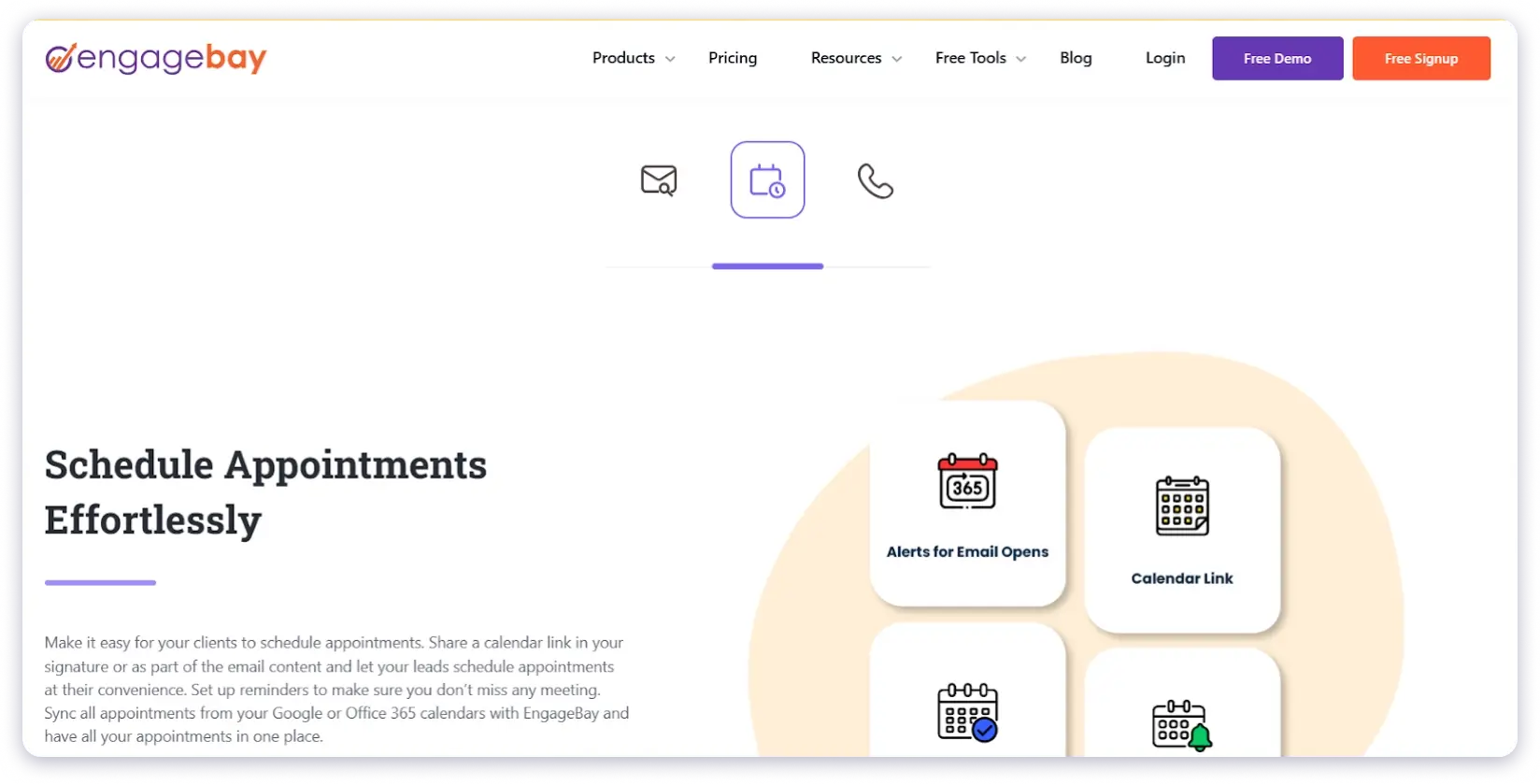
Plus, it brings everything together that is necessary: email marketing, CRM, ticketing, landing pages, live chat, calling, and reports, so you don’t have to switch between tools.
Here are My Favorite Sales Cadence Features From EngageBay
- Make and receive calls inside the platform, and it automatically saves all call notes and recordings.
- Build separate deal pipelines for different products, teams, or countries, and update them using drag-and-drop functionality.
- The calendar feature allows leads to book meetings with you directly and syncs with your Google or Outlook calendar.
Pros
- Great customer support.
- Easy-to-use interface and intuitive automation setup.
Cons
- Limited integration with other platforms.
- The mobile app lacks full functionality.
- Advanced reporting and analytics features are reserved for higher-tier plans.
Pricing (Billed Annually)
For CRM and Sales Bay
- Basic: $11.45/Month
- Growth: $49.99/Month
- Pro: $73.69/Month
P.S. It also has a free plan with limited features.
6. Klenty
Best for:
B2B sales teams that want powerful, multi-channel outreach at scale.
Klenty is a multichannel sales outreach platform.
It’s built on AI and intent data that helps teams organise smart outreach across email, phone, SMS, WhatsApp, and LinkedIn.
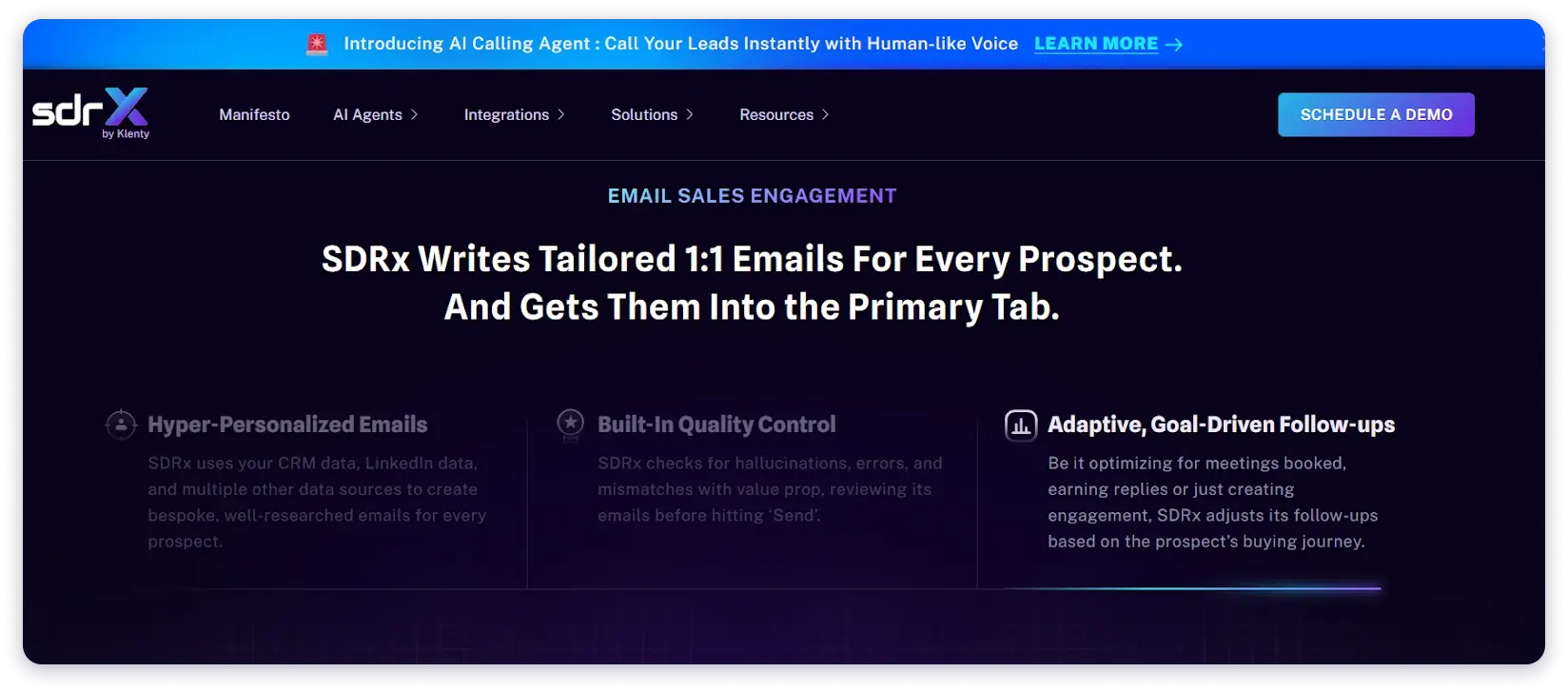
I like its automation features the most. It makes scaling much easier and quicker.
Here are My Favorite Sales Cadence Features From Klenty
- AI agents that write personalized emails and suggest the best follow-up times.
- The built-in parallel dialer lets teams make multiple calls in one session, drop pre-recorded voicemails, and take notes without switching tabs.
- Intent-based playbooks route leads into the right cadence based on how they engage, improving response rates.
Pros
- Detailed sales analytics features.
- Accurate email deliverability features like email warm-up, sending patterns, and monitoring.
Cons
- Users reported bugs and a clunky UI.
- Steep learning curve.
- LinkedIn and SMS automations are available in higher plans.
Pricing (Billed Annually)
Sales engagement plans
- Starter: $50/Month
- Growth: $70/Month
- Plus: $99/Month
Finding an alternative? Read this Klenty alternatives blog to find the answers.
7. Hubspot Sales Hub
Best for:
Medium to large companies and enterprises with large sales and marketing teams.
HubSpot Sales Hub is a renowned customer-first tool to assist growing teams.
Its great advantage is that it also has a free CRM and a marketing tool, which makes salespeople’s lives easier. It’s a complete set!
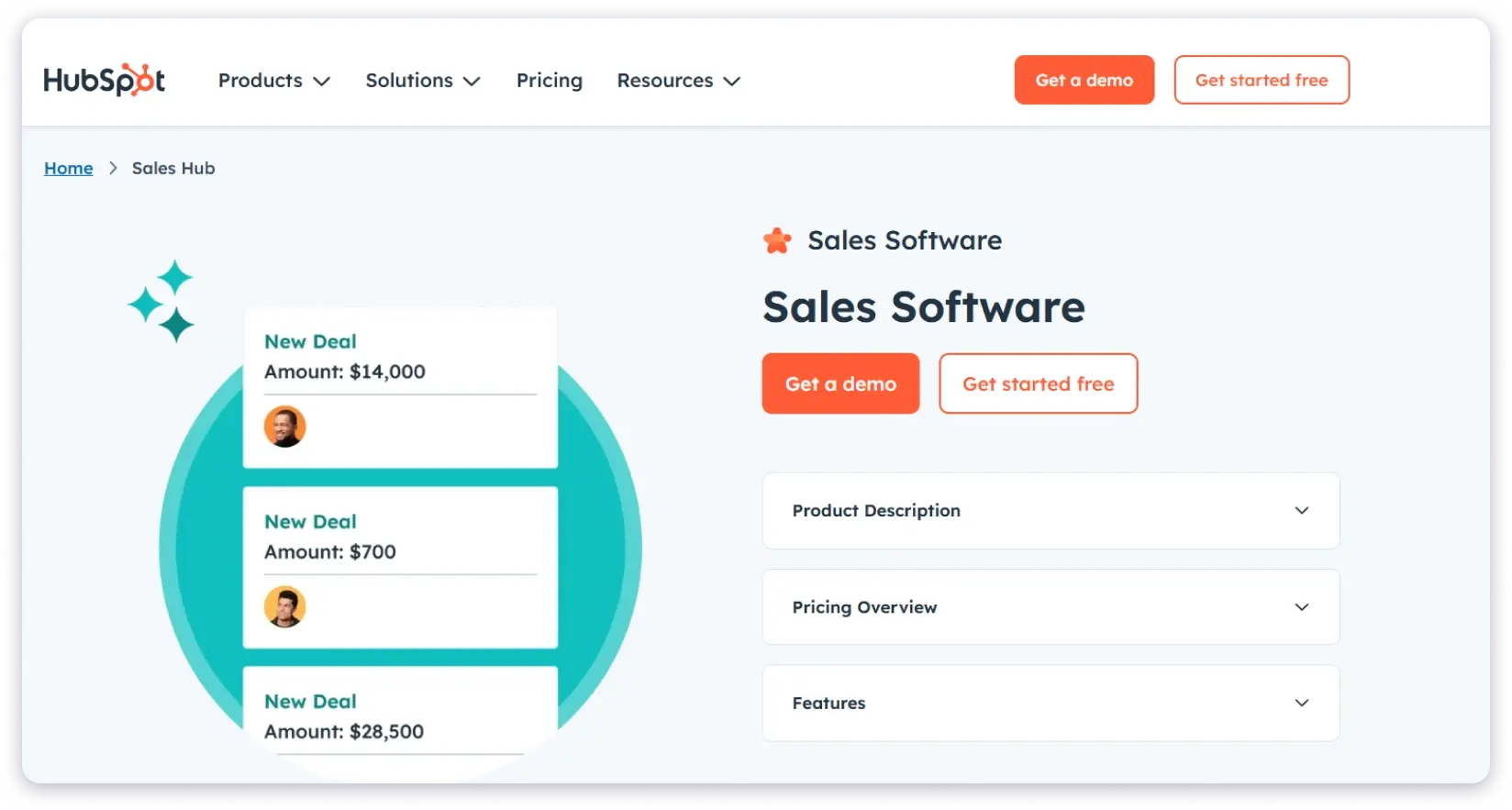
But there’s much more! Let’s have a look at it.
Here are My Favorite Sales Cadence Features From Hubspot Sales Hub
- HubSpot supports over 1,700 integrations.
- Its smart filters make it easy to find and connect the right tools for your workflow.
- It has filters and custom fields for proper account management.
Pros
- Excellent customer support, always solving queries quickly.
- Very easy UX, which sales reps can use easily.
- The funnel is easy and can onboard clients as quickly as 48 hours.
Cons
- It gets costly as you scale.
- Fewer options and features in lower plans.
Pricing (Billed Annually)
- Sales hub starter: $20/Month
- Sales hub professional: $100/Month
- Sales hub enterprise: $150/Month
P.S. You will also need to pay $ 1,500 for professional and $ 3,500 for enterprise plans as onboarding charges.
8. Pipedrive
Best for:
Small to medium sales teams who want powerful pipeline management and automation.
Pipedrive is a pipeline management and sales CRM tool.
I placed it on the list because it combines a visual, intuitive interface with smart automation and AI features that help teams close deals faster without getting overwhelmed.
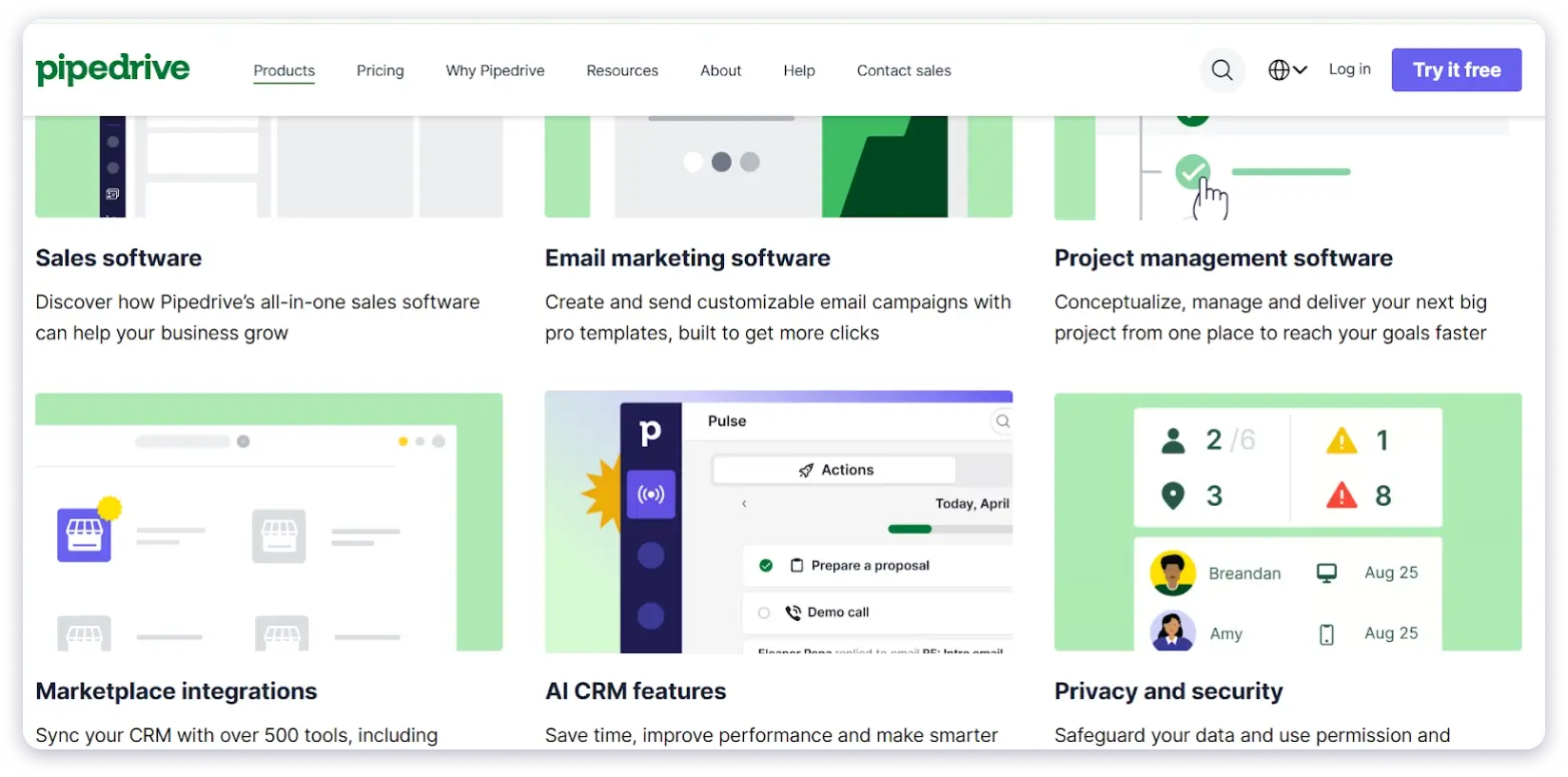
I loved using its drag-and-drop pipeline view and activity management feature. It was easy, to the point, and easy to track leads.
Here are My Favorite Sales Cadence Features From Pipedrive
- Provides a complete contact history for your team for easy team management.
- AI assistant recommends deals to prioritise, drafts emails, and summarises activities to save time.
- Robust security features, including permissions, two-factor authentication, and encrypted data, keep information safe for teams.
My team likes its pipeline management features the most.
And of course, salespeople can understand the value of having the proper sales funnels. It reduced the deal closing time by days.
Pros
- AI features that boost productivity and insights.
- Mobile app keeps sales reps productive anywhere.
Cons
- The mobile app can lag on older devices.
- Advanced reporting requires higher-tier plans.
Pricing (Billed Annually)
- Essential: $14/Month
- Advanced: $24/Month
- Professional: $49/Month
- Power: $59/Month
- Enterprise: $79/Month
9. Salesloft
Best for:
Large sales teams that need advanced tools to manage and optimise multi-step prospecting cadences.
Salesloft is a sales cadence platform designed to help large teams consistently and effectively engage their prospects.
It allows you to create multi-step campaigns that follow your set schedule, ensuring no lead is missed.
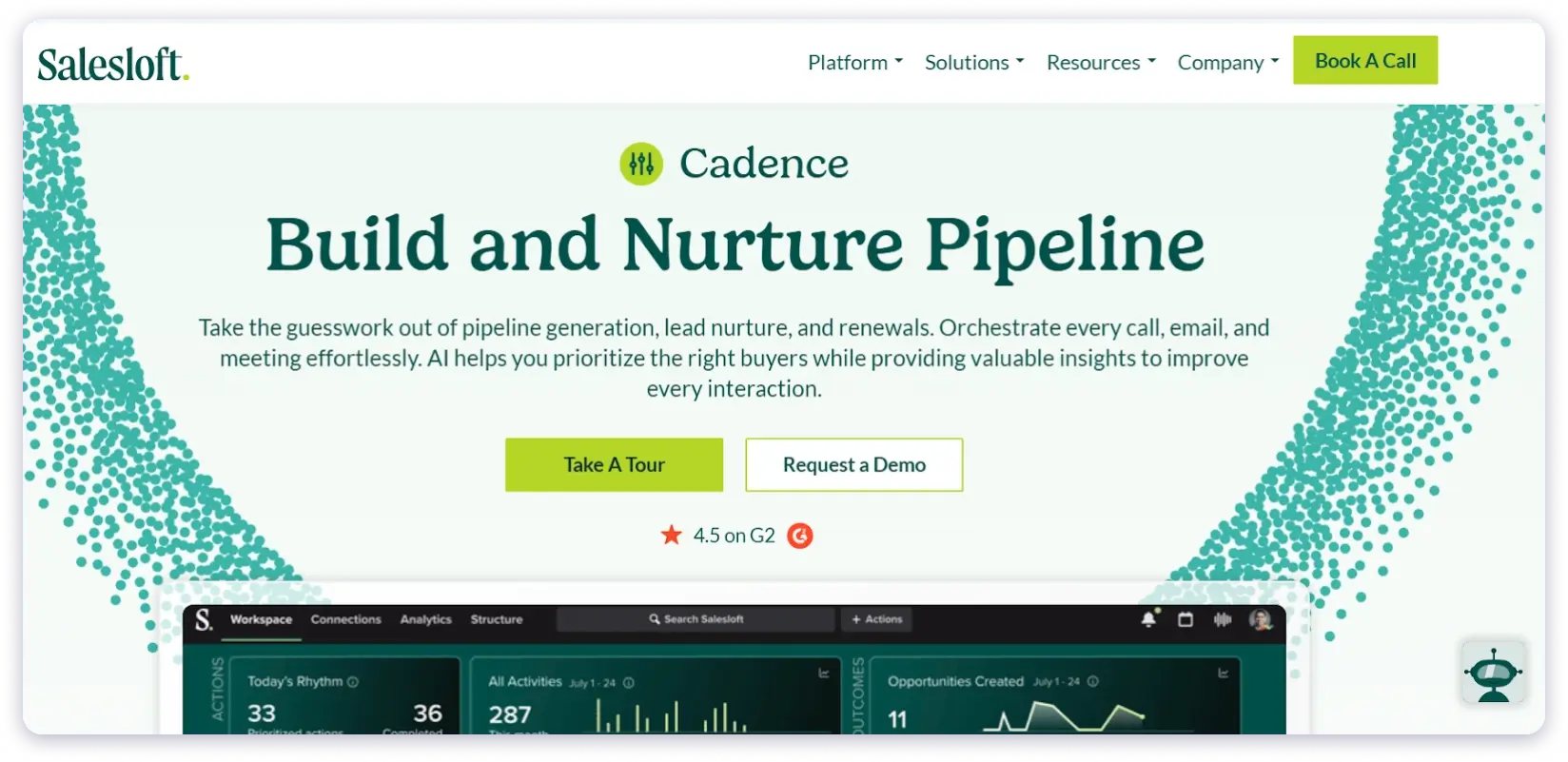
Every interaction, whether a reply or any other action, is automatically logged in your CRM, providing a comprehensive view of prospect engagement.
Here are My Favorite Sales Cadence Features From Salesloft
- AI-powered cadence helps identify and prioritise the most active prospects, increasing lead engagement.
- Team productivity tracking lets managers monitor their teammates’ performance and offer support to maintain a consistent sales cadence.
- The live actions dashboard displays what leads are doing in real-time, allowing you to adjust your plans quickly and improve conversions.
Salesloft also includes a coaching tool that suggests the best next steps based on how prospects interact with your team.
Pros
- Bulk contact upload is quick and simple.
- Advanced system and cadence setup ensure leads move smoothly through the pipeline.
Cons
- Doesn’t offer much in the way of help docs or tutorials, which can slow down setup.
Pricing (Billed Annually)
Custom pricing available upon request.
10. Apollo
Best for:
Medium to Enterprise-level organizations looking for a solid prospecting tool.
Apollo.io is a sales engagement and prospecting platform.
It combines a massive B2B database with automated outreach across email, phone, LinkedIn, SMS, and calls all in one place.
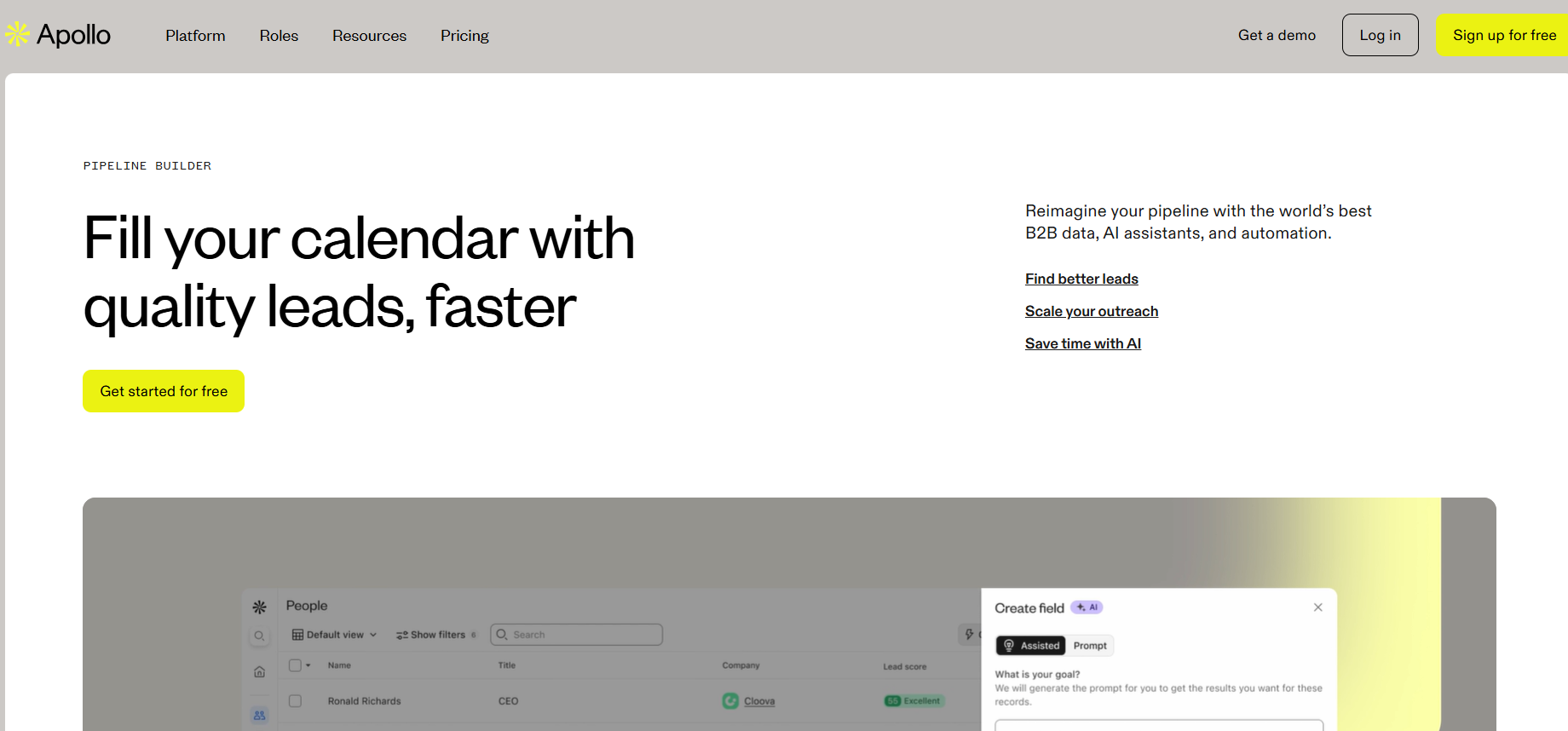
You can build campaigns that follow a set schedule and adapt to lead actions.
Here are My Favorite Sales Cadence Features From Apollo
- The built-in dialer lets you call leads directly from the platform, and it saves every call, note, and recording for later.
- It’s AI helps you write better emails by suggesting subject lines, personalization, and the best time to send.
- You’ll get alerts when a lead changes jobs or shows buying signals, so you can reach out at the right time.
Pros
- AI assists with writing, targeting, and pacing your cadence.
- Integrates with CRMs for seamless data flow and updates.
Cons
- Their pricing plans are unclear and expensive.
- The database is quite small compared to other lead finders.
- The email outreach part is very limiting – it lacks a warm-up feature.
Pricing (Billed Annually)
- Basic: $49/Month
- Professional: $79/Month
- Organization: $119/Month
Thinking of finding an alternative? Read this, Apollo.io alternative blog, to find your solution.
11. Gong
Best for:
Sales leaders, SDR/BDR teams, customer success, revenue operations, and mid-market to enterprise organisations seeking an AI-powered tool.
Gong is a smart tool for revenue teams that listens to your team’s calls, emails, and meetings.
It turns them into notes, tracks what’s working, and gives valuable tips to help close more deals. AI powers all of this.
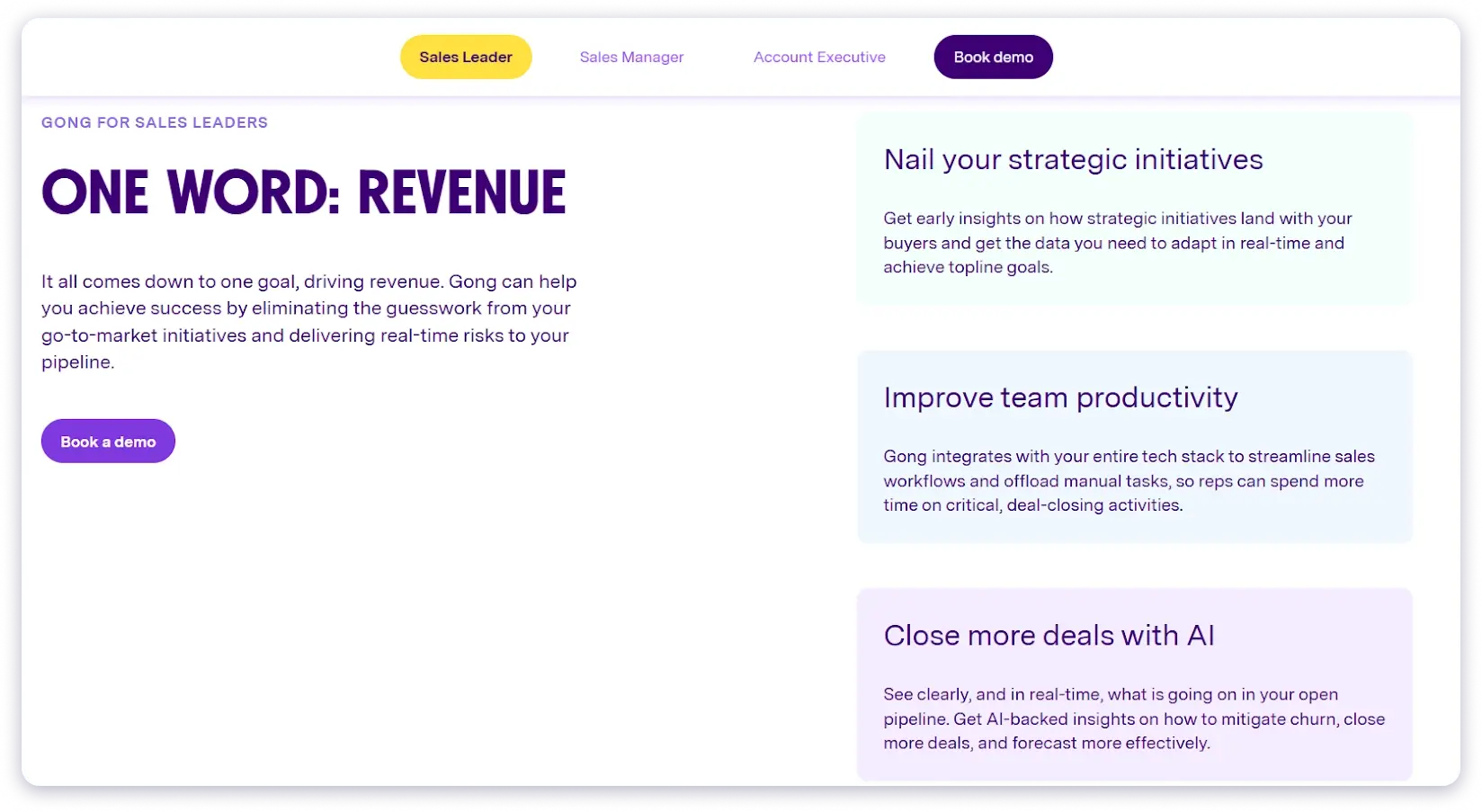
The reason for keeping it in this list is that it does more than just record calls.
It helps sales teams understand what’s happening in real-time, which deals are at risk, who needs help, and which actions lead to wins.
Here are My Favorite Sales Cadence Features From Gong
- Records sales calls automatically and creates AI summaries, so reps can focus on the conversation while managers review calls with clear insights.
- Its deal scoring tool predicts which deals are likely to close by studying how buyers talk, reply, and interact.
- Suggests what top reps do differently by tracking behaviors, common objections, and message patterns to help everyone improve.
Pros
- AI-powered call recorder and transcriber for sales coaching.
- Real-time deal risk alerts based on buyer signals.
- Forecasting engine with engagement-based scoring.
- Native integrations with Salesforce, Slack, and Zoom.
- A call library for training and onboarding reps at scale.
Cons
- Custom dashboard and reports are limited.
- Some call recordings take time to process.
- Pricing is high for small or early-stage teams.
Pricing (Billed Annually)
Custom pricing available upon request.
12. Close
Best for:
Startups, remote sales teams, and small to mid-sized businesses that want a CRM with built-in calling, emailing, and automation.
Close is a sales-first CRM designed to help reps send emails, make calls, and close deals, making it perfect for building a complete sales cadence.
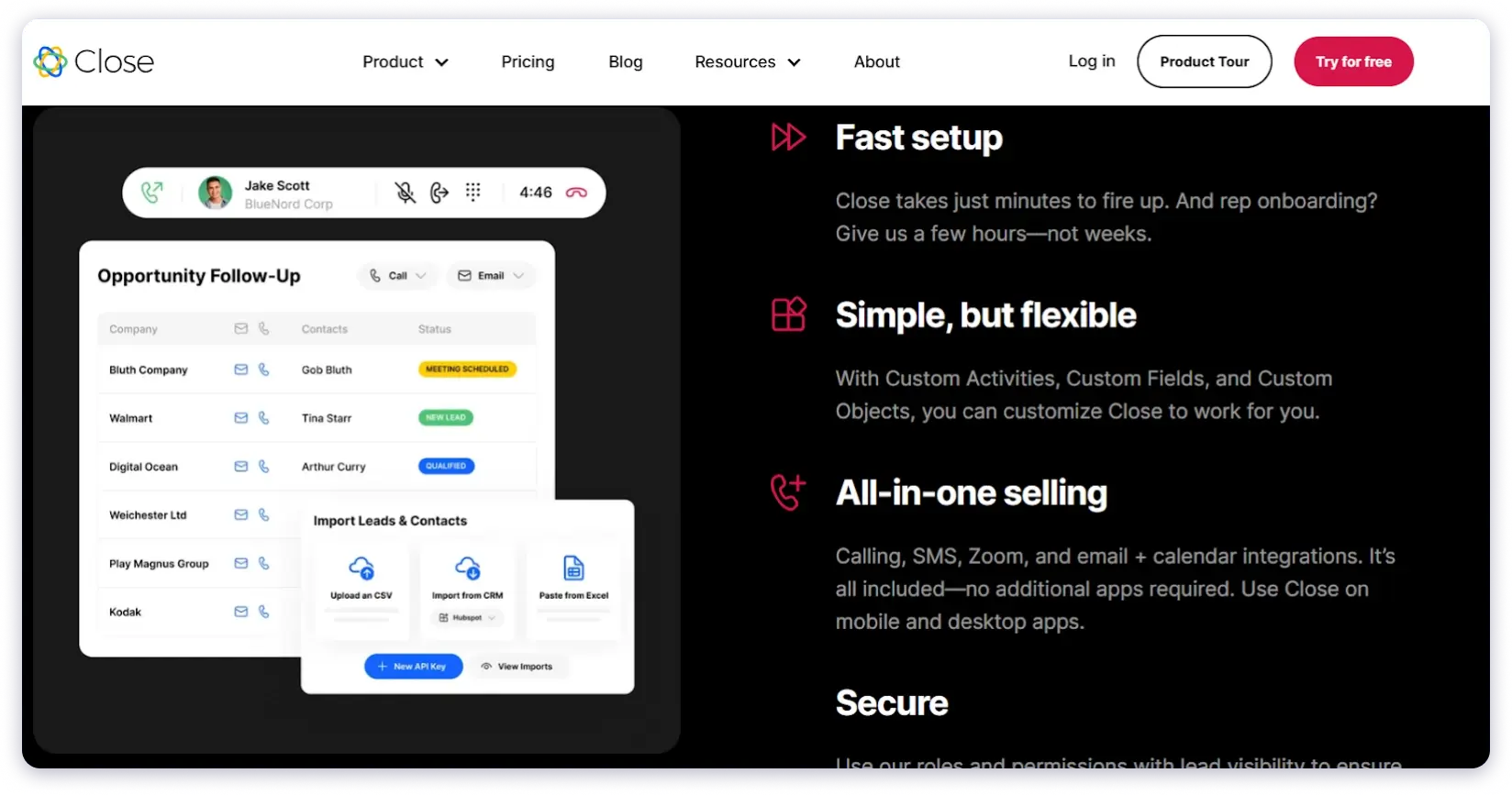
Everything is managed inside one tool, saving time and making outreach fast and efficient.
Here are My Favorite Sales Cadence Features From Close
- Smart Views filter leads based on activity, such as calls, emails, time zone, or status, so reps follow up at the right time.
- Workflow automation sends emails, creates follow-up tasks, and advances deals through the pipeline according to your predefined rules.
- The Call Assistant records and transcribes calls, then provides AI summaries so managers can coach reps more effectively.
Pros
- Automated follow-ups and pipelines enable reps to nurture leads without manual work.
- Powerful search and Smart Views help teams qualify and prioritise large lead lists.
- Free onboarding support and migration assistance accelerate the setup process.
- Intuitive interface enables quick adoption—users report setup in days, not weeks.
Cons
- Pricier than many small‑business CRMs.
- SMS and calling features are unavailable in some countries.
- Occasional bugs and slowdowns are reported when handling complex workflows.
Pricing (Billed Annually)
Custom pricing available upon request.
9 Factors To Look For In a Sales Cadence Tool
Before selecting a tool, verify that it offers features that simplify your daily tasks and support your team’s growth.
The best sales cadence software save time, facilitates effective communication, and helps your team close more deals. Check the factors below to understand what is needed from the
Must-Haves for Daily Use
1. CRM Integration
The tool should integrate well with your CRM. This makes it easier to nurture leads.
This feature saves a lot of time by simply copying and pasting data from one platform to another.
2. Follow-Up Automation
It should help you schedule or automate follow-ups.
Some advanced tools have follow-ups based on preset triggers, such as when someone opens, clicks, or replies to your previous email.
This might help: Find the best AI SDR tools for 2025.
3. Smart Scheduling
The tool must send emails when people are most likely to open and read them.
This feature increases the likelihood of receiving a response.
4. Multi-Channel Support
It should enable you to contact leads through various channels, such as email, phone calls, or LinkedIn.
This helps you reach leads where they are most available or active.
5. Deliverability Protection
The tool should help you avoid spam folders and blacklists.
It should include email warm-up and help remove invalid or inactive leads from the list to protect your sender reputation.
Advanced Features for Scaling
1. AI Personalization
It should help you write emails that feel personal, relevant, and valuable using AI.
This feature saves time writing manual personalized emails at scale while making your emails sound human.
Read this to find the best AI sales tools for 2025.
2. Advanced Team Collaboration
Sales cadence is a team effort, so your whole team should be able to share leads, view progress, and work in one place.
This makes the team close deals faster and reduces sales cycles.
3. Lead Scoring
This feature shows you which leads are more likely to buy, AKA a high-intent lead.
Using this prioritization and setting up the next cadence steps becomes accurate.
4. Advanced Analytics & Reporting
It should track opens, clicks, replies, and conversions in shareable and straightforward reports. This is one of the most important steps in setting up advanced cadence.
Decisions are always more accurate when they’re data-backed.
5 Real Benefits of Using a Sales Cadence Tool
Here are five ways a good sales cadence setup helped my business — and how it can help yours too.
1. Saves Time
Automation handles follow-ups, scheduling, and task reminders—so reps spend less time on manual work.
2. Brings Structure to Lead Generation
Cadences create repeatable workflows, making it easier to follow up consistently and move leads through the funnel.
3. Makes Scaling Easier
You can track what’s working, spot bottlenecks, and use that data to grow without breaking your process.
4. Improves Response Quality
Quick, relevant follow-ups improve how leads experience your outreach, leading to more replies and better outcomes.
5. Increases Pipeline Velocity
Faster, more personalized follow-ups = shorter sales cycles and quicker decisions.
Key Takeaways
There’s no one-size-fits-all sales cadence tool. Instead of picking just one, it’s better to mix a few tools that work well together, match your sales process, and stay within budget.
Here’s what to keep in mind:
- Use 2–3 tools that cover different parts of your sales flow.
- Make sure they integrate easily with each other.
- Choose tools that support your preferred channels (email, LinkedIn, calling).
- Pick tools that fit your budget, since you’ll need more than one.
This way, you build a smarter, more flexible sales system—without overspending.
FAQs
1. What is an example of sales cadence?
A sales cadence is a structured sequence of touchpoints (emails, calls, social messages, etc.) designed to engage prospects and move them through the sales funnel. Here’s a sales cadence example of a 5-day sales cadence:
- Day 1: Personalized Email
- Day 2: Follow-Up Call
- Day 3: LinkedIn Connection
- Day 4: Value-Focused Email
- Day 5: Follow-Up Call (last try)
2. Why is sales cadence important?
Sales cadence helps in,
- Improving lead generation
- Increasing conversation rates
- Saving time and efforts
- Maintain consistency in teamwork
- It helps in making better decisions.
3. How to set up a sales cadence?
You can follow the following steps to create a sale cadence
- Set your goals
- Identify your ICP (Ideal customer profiles)
- Decide on channels (what channels you will be using for setting up outreach cadence)
- Create a timeline (when, whom and how to connect)
- Research and prepare relevant content
- Track and analyze

